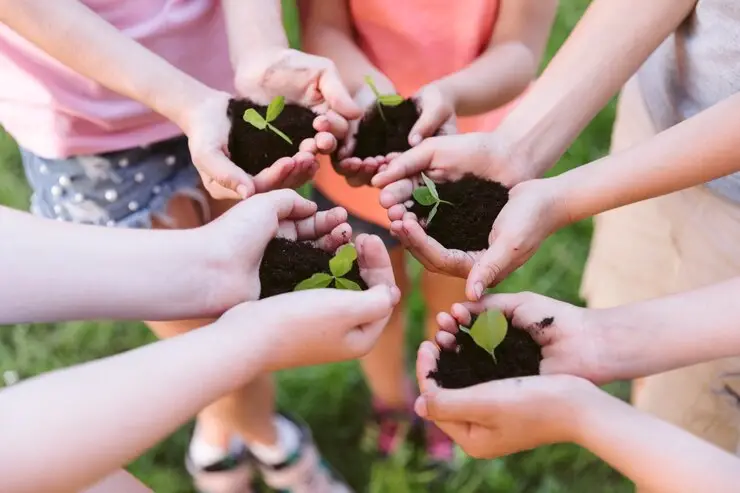Community Psychology Approach to Long-Term Food Preservation: Pickling Methods

Preserving food through pickling is a time-honored technique that not only extends the shelf life of food but also enhances its flavor and nutritional value. Community psychology principles can be applied to promote and support the use of pickling methods, such as fermentation in brine and immersion in vinegar, as a way to build community resilience, self-sufficiency, and health. This article explores these two methods and highlights how community psychology can play a role in their adoption and effectiveness.

Page Contents
Community Psychology Approach to Long-Term Food Preservation: Pickling Methods
Pickling Methods for Long-Term Food Preservation
1. Fermentation in Brine
Description: Fermentation in brine involves submerging vegetables or fruits in a saltwater solution to encourage the growth of beneficial bacteria. This process not only preserves the food but also enhances its nutritional profile and flavor through fermentation.
Process:
- Preparation: Clean and cut vegetables or fruits. Common options include cucumbers, cabbage, and carrots.
- Brine Solution: Prepare a saltwater solution, typically consisting of 1-3 tablespoons of salt per cup of water. The salt concentration helps create an environment that favors beneficial bacteria while inhibiting spoilage organisms.
- Fermentation: Submerge the prepared food in the brine, using a weight to keep it submerged. Seal the container with a lid or cover and store it at room temperature or a cool, dark place.
- Fermentation Period: Allow the food to ferment for several days to weeks, depending on the type of food and desired tanginess. Taste periodically to determine when it has reached the desired flavor.
Benefits:
- Nutritional Enhancement: Fermentation increases the bioavailability of nutrients and adds beneficial probiotics, which can support gut health.
- Flavor Development: The fermentation process imparts unique flavors and textures to the food.
- Self-Sufficiency: Fermenting food at home fosters a sense of self-reliance and can be a valuable skill for community resilience.
2. Immersion in Vinegar
Description: Immersion in vinegar involves soaking food in a vinegar solution, often with added spices and herbs, to preserve it. This method creates an acidic environment that prevents the growth of harmful microorganisms.
Process:
- Preparation: Clean and cut vegetables or fruits. Popular choices include cucumbers, onions, and peppers.
- Vinegar Solution: Prepare a pickling solution using vinegar (usually white or apple cider vinegar), water, and a combination of spices, such as dill, garlic, and mustard seeds.
- Immersion: Place the prepared food in jars or containers and pour the vinegar solution over it, ensuring that the food is fully submerged.
- Processing: Seal the jars with lids and process them in a boiling water bath for a specified time to ensure they are sealed properly. This step is essential for long-term storage and safety.
Benefits:
- Flavor Variety: The use of different vinegars and spices allows for a wide range of flavor profiles.
- Convenience: Immersion in vinegar is relatively straightforward and requires less time compared to fermentation.
- Extended Shelf Life: Properly sealed pickled foods can last for several months to years.
Community Psychology Interconnection
**1. Educational Workshops and Demonstrations:
- Description: Host community workshops to teach individuals about the benefits and techniques of pickling, including fermentation and immersion methods.
- Purpose: Educates community members on how to preserve food, promotes self-sufficiency, and enhances food security.
**2. Community Gardens and Food Preservation Programs:
- Description: Integrate pickling techniques into community garden programs or food preservation initiatives.
- Purpose: Encourages the use of locally grown produce, fosters community engagement, and supports sustainable food practices.
**3. Shared Knowledge and Resources:
- Description: Create platforms for sharing pickling recipes, tips, and experiences within the community.
- Purpose: Builds a knowledge base and support network, enhancing communal resilience and food preservation skills.
**4. Mental Health and Well-being:
- Description: Incorporate food preservation activities, such as pickling, into mental health and wellness programs.
- Purpose: Provides therapeutic benefits through hands-on activities, promotes mindfulness, and reduces stress.
**5. Cultural and Social Events:
- Description: Organize events such as pickle-making contests, food fairs, or cultural festivals centered around pickling traditions.
- Purpose: Celebrates cultural heritage, fosters social connections, and strengthens community bonds.
Conclusion
Pickling through food fermentation in brine and immersion in vinegar are effective methods for preserving food, each with its own set of benefits. By applying community psychology principles, we can promote these techniques to enhance food security, build self-sufficiency, and support overall community well-being. Educational programs, shared resources, and community events can help individuals and groups adopt these practices, fostering resilience and strengthening communal ties.






